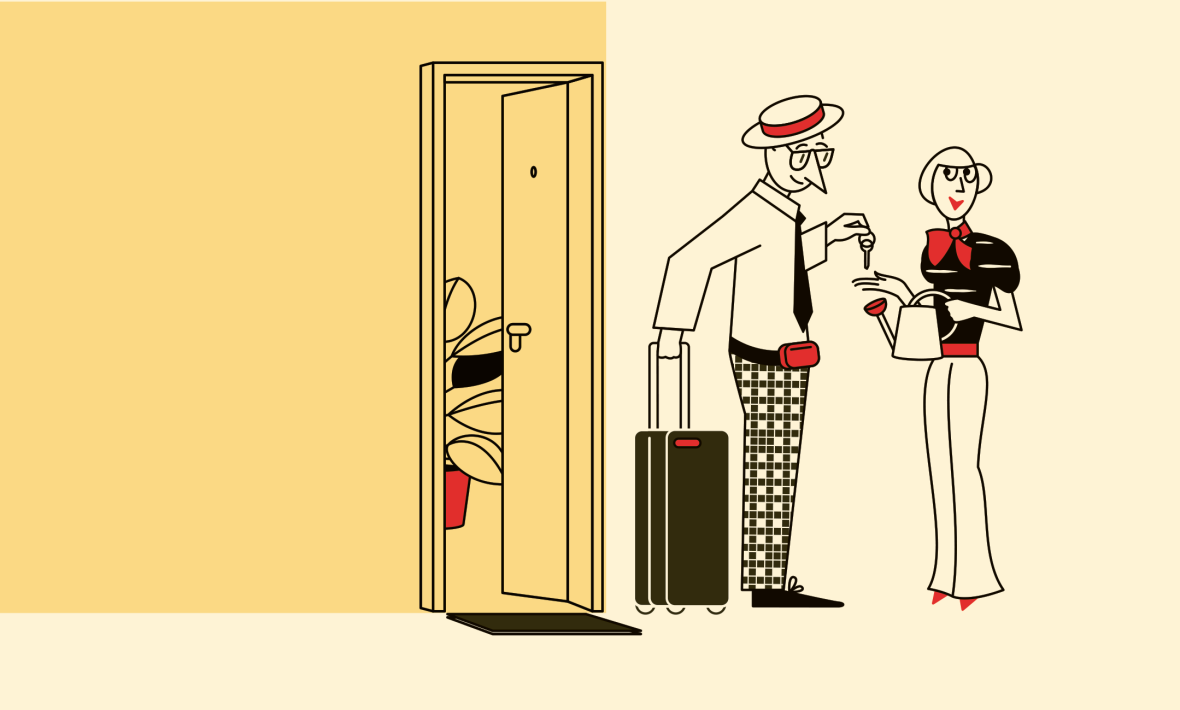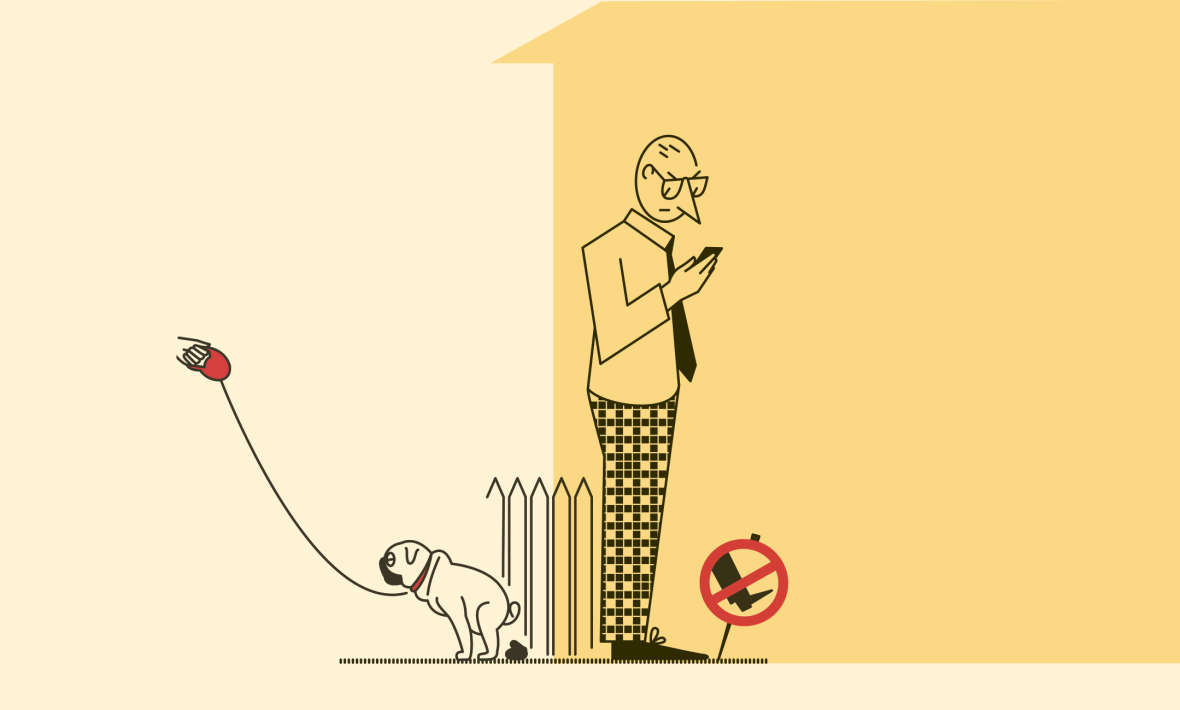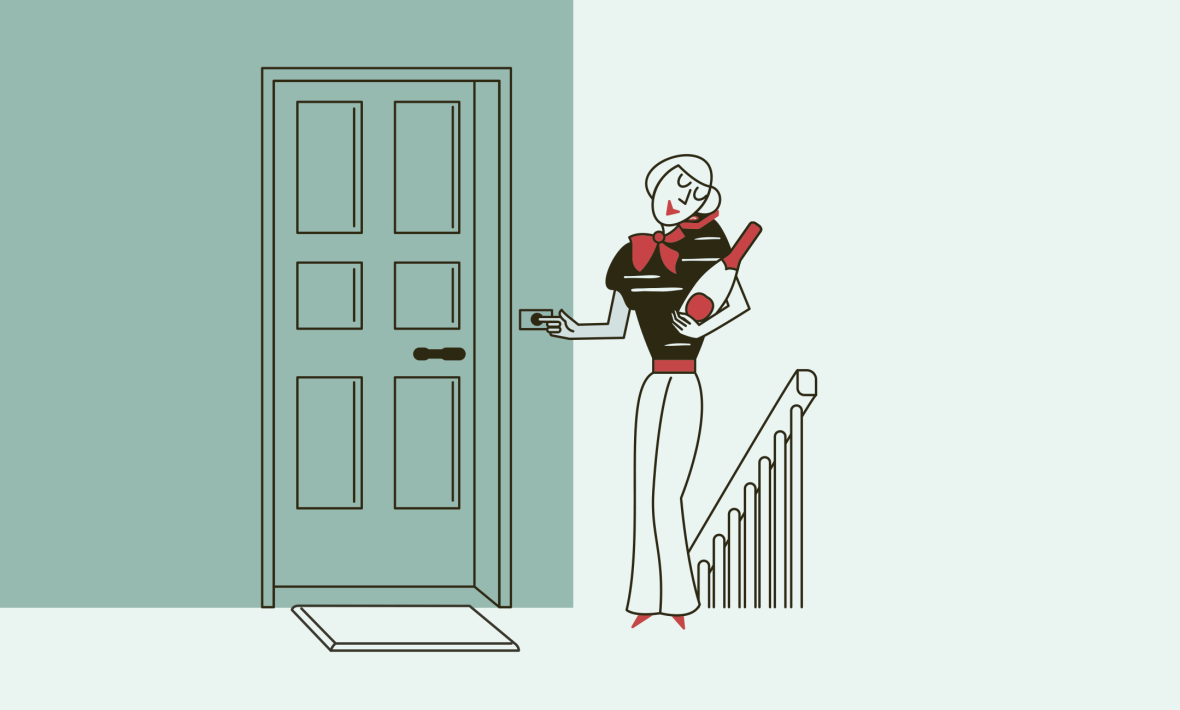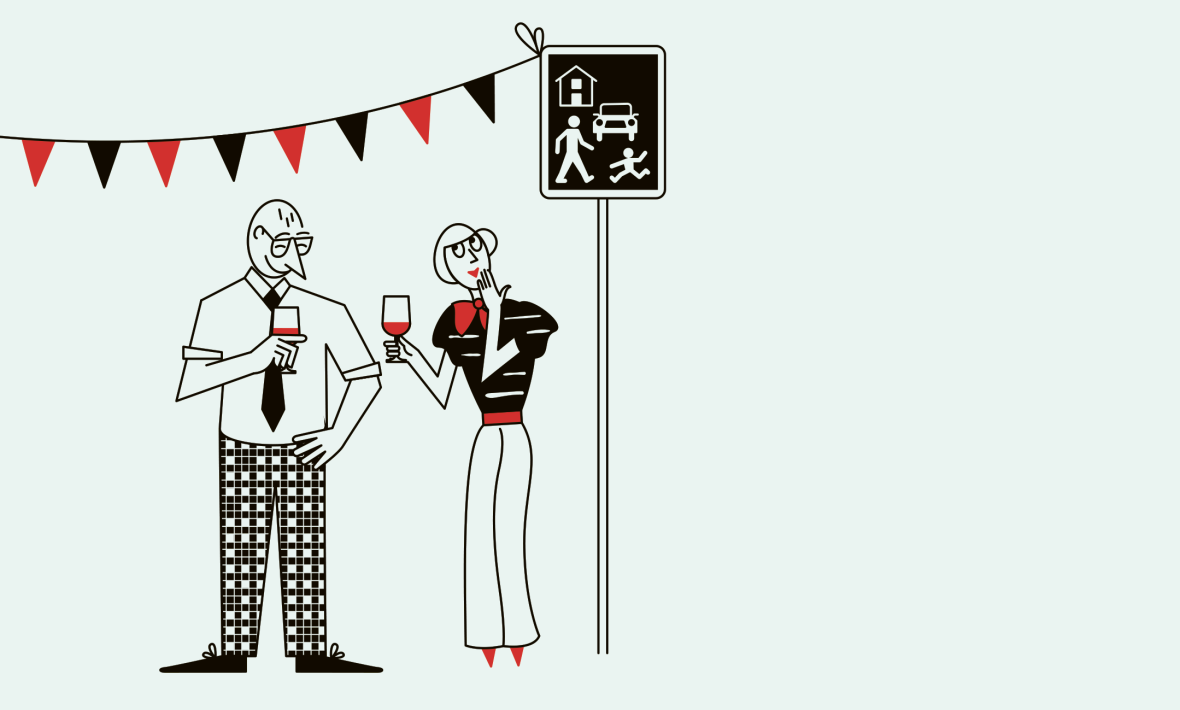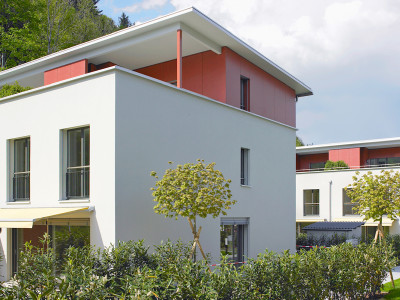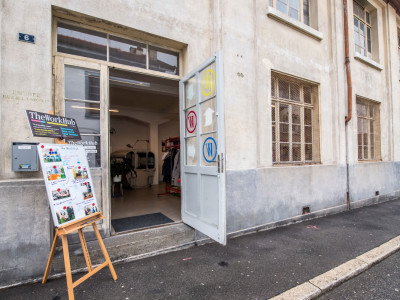
The fine art of neighbourliness
We all have neighbours – whether we want them or not. And often we don't. Or do we? An interpretation.
My neighbours saved my life. Not by reviving me with a handy defibrillator at just the right moment, but nevertheless in a situation of urgent need: my boyfriend ended our relationship virtually overnight and left me – with two small children to care for by myself. If it weren't for our neighbours Sophie and Steffi, who always had time to listen to my woes and whose door was always open for us, I'd probably still be sitting and crying in that beautiful old flat in Zurich's 6th district: disappointed, frustrated, disillusioned.
The announcement "Prosecco time!" came mostly around 8 pm by text message – an invitation to enjoy a drink together in the cosy flat over ours that the two sisters shared. "Sweetheart, we'll make you laugh again. Come on up!" It was all so practical: as soon as the children were asleep in their beds, I would turn on the baby monitor and tiptoe upstairs. In my misery, there was nothing I welcomed more than these pleasant hours of conversation distracting me from my singleton status. The three of us had always got along well in the building. But the business with my love life brought us closer together and showed me that lifesavers can be so close – next door, down the corridor, around the corner, or in my case, just one floor up.
Ignorance, discretion or disinterest?
Surely everyone – tenants as well as owners – has had the experience of not always feeling a personal connection with their neighbours simply because they live in the same building. How wonderful it is, though, to have such blissful ignorance of people so near. The woman living alone in the two-room flat? She spends her days smoking and watching television – and surely has nothing interesting to say. The well-dressed executive who sits in his expensive car making important calls over the loudspeaker? He's always in a hurry and only speaks English anyway. The slim woman who jogs through the neighbourhood each evening? No point in greeting her; she won't even notice with her headphones on. There are a thousand and one ways to ignore or gracefully overlook one's neighbours. Close the door, and shut out the outside world.
There are residential developments where people avoid the stairs and prefer to disappear into the empty lift to reach another floor without being noticed. There are residential developments where tenants live side by side for years, or even decades, without having once exchanged words beyond the obligatory hello. There are neighbourhoods where residents encounter one another only in the underground car park or the basement. The belief that residents enjoy more community in a multi-family building with dozens of storeys than in a neighbourhood with villas and single-family homes is a false one. Relationships don't develop automatically just from proximity. Except for strained relationships. There are multi-family buildings where members of the commonhold association are in constant dispute at countless board meetings – about, for instance, whether the trees at the playground are valued for the shade they provide or are in the way because they obstruct someone's lake view.
Gossip included
This much is known: a corner shop, café, newsstand, daycare centre or hair salon can be greatly beneficial to a neighbourhood. Even small businesses – if they get enough customers – have the potential to become veritable meeting places. One frequents them to buy bread, get a haircut or enjoy a coffee. During these unspectacular, everyday errands, you meet people from the neighbourhood, exchange ideas, have a chat and, yes, even engage in gossip. Such encounters are experienced daily by residents of vibrant city neighbourhoods who live in so-called mixed-use zones. However, opportunities like these remain a pipe dream for those living in purely residential areas like the suburban developments that sprang up in the 1980s and 1990s and where monoculture rules, not exchange.
"In pre-modern societies, the neighbourhood was a community based on economic necessity and strictly regulated by social norms."
Professor Walter Siebel, a sociologist at the University of Oldenburg in Germany, has spent decades researching neighbourhood relations. He's found that the quality of these social relationships has undergone dramatic change. "In pre-modern societies, the neighbourhood was a community based on economic necessity and strictly regulated by social norms." The farmer down the road had the same status and lived and worked under similar circumstances as his neighbour. Geographical proximity also meant social proximity. Neighbours were subject to the same needs and constraints, and inevitably they depended on one another to overcome the challenges of daily life. "Many people remained in the same village for their entire lives," says Siebel. One's neighbourhood was one's destiny.
This objective basis for community is lost today. Neighbours are no longer economically dependent on one another and no longer share the same lifestyle and values out of necessity. Neighbourhoods where people both live and work are rare exceptions. Industrial urbanisation detached work from its relationship to residence.
Pragmatism is essential
It's not easy to understand why neighbours don't warm to each other. The reason is not necessarily disinterest – it could be reticence or typical Swiss discretion that keeps us at a distance. Doesn't "live and let live" have its own merits, or even advantages? We all know stories about neighbours who for years were best friends and regular guests at each other's barbecues and holiday parties, only to have a falling-out to the point that they no longer speak – and all because of a disagreement over a parking space.
It is probably wise not to have too high expectations regarding neighbourhood relationships, but rather to strive for pragmatic cooperation. This might mean that one need not think twice about asking to borrow a cup of sugar. It might also mean not getting upset about trainers, hockey sticks and skateboards cluttering up the entryway and choosing instead to see them as signs of a vibrant community.
"This much is known: a corner shop, café, newsstand, daycare centre or hair salon can be greatly beneficial to a neighbourhood."
The problem with tolerance
That's right: we've arrived at the subject of tolerance. You – not the tenant regulations that nobody reads anyway – are ultimately the one who decides the success or failure of peaceful coexistence with your neighbours. The thing about tolerance is that people have different ideas about when it should be shown. The great pile of dog faeces in the garden, for example, bothers me much more than the sound of children playing table tennis which has become part of the neighbourhood's evening "soundtrack". This is because I simply have no connection to dogs, but I find it wonderful that children are playing outside. For Mrs X or Mr Y, the situation might be reversed.
But let's stay positive. Emptying each other's mailboxes or watering plants during holiday absences is and remains the ideal way to get to know one another. When neighbours entrust one another with the keys to their flats, this allows them a glimpse into each other's lives in an entirely natural way – and forces them to rethink their assumptions. Would I ever have guessed that Mr Meier had such a stylish designer sofa in his living room? And is that impressive bookcase in Ms Müller's bedroom just for show, or is she really so well read? Questions and more questions.
"It is not simply about creating buildings; it's also about creating encounters. Building means creating atmosphere."
But this low-threshold, simple way to get to know one's neighbours indirectly through the contents of their homes during their absence is now being endangered by professional service providers who offer not only house-sitting services for high-end homes, but an array of customised services on request as well. With professional house-minders watering plants, checking the mailbox and feeding the cat while its owner is away, as well as babysitting or doing the shopping, there are really very few options remaining for how community can be experienced at all in the traditional sense. Some cities and districts have active neighbourhood associations. At no cost and out of pure idealism for a better coexistence against increasing anonymity, they host a variety of activities that might include barbecues, raffle events, jass games and short excursions. Street festivals are another popular way to build a sense of community in neighbourhoods. Residents get to know one another during the organisational phase, and by the time the festival kicks off they may even like each other. Some neighbourhood associations have found new inspiration through the arrival of foreigners and "expats", as studies show that many new arrivals desperately seek social integration.
Planner and investor obligations
Architects, planners and investors also have a say in the establishment of communities. They decide what will be built, what use the building will serve, its relation to other buildings and how development will be carried out. Is one willing and able to provide people with attractive outdoor spaces that encourage interaction, or does one simply throw in an indifferent green space designed merely to meet the minimum legal requirements? Are spaces designed to be only "public" or "private", or is there perhaps also room for transitional spaces – zones where interior and exterior flow together? Should building activity be driven merely by coefficients of utilisation, or does one seriously address questions such as how people coexist, how to encourage interaction between neighbours, how to bring about a good mix? It is not simply about creating buildings; it's also about creating encounters. Building means creating atmosphere.
"The belief that residents enjoy more community in a multi-family building with dozens of storeys than in a neighbourhood with villas and single-family homes is a false one."
Back to those legendary prosecco evenings in the lovely flat in the 6th district. One evening, shortly before I went upstairs to see Steffi and Sophie, I made a serious mistake and took the baby monitor's transmitter with me instead of the receiver. The result was that I couldn't hear any of the cries from the floor below during our meet-up – rather, our chatter and eventually our increasingly hearty laughter was piped into the nursery. Little Charlotte, startled by so much noise, wailed bitterly in her cot. Her big brother Jakob, meanwhile, no less confused and snivelling in his pyjamas, felt his way up the stairs whilst crying desperately for his mother. Such late-night turmoil in our building! And all because I had such wonderful neighbours who offered me companionship in difficult times.

